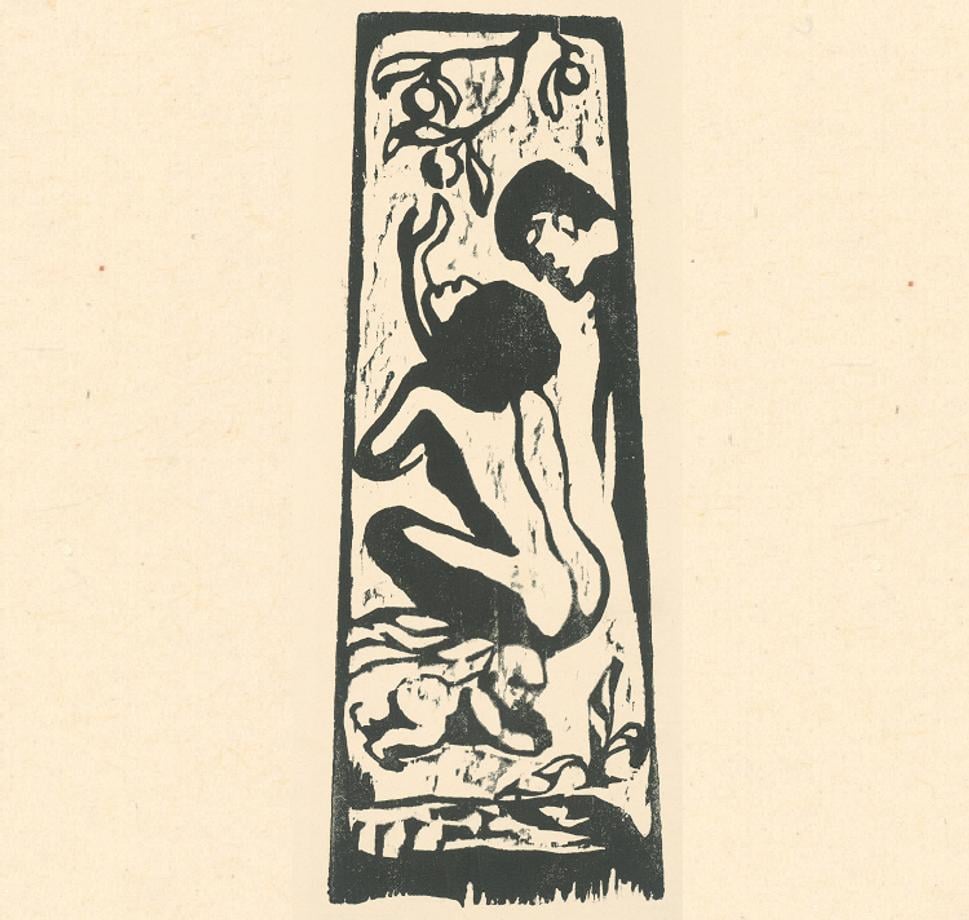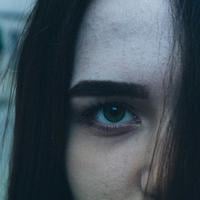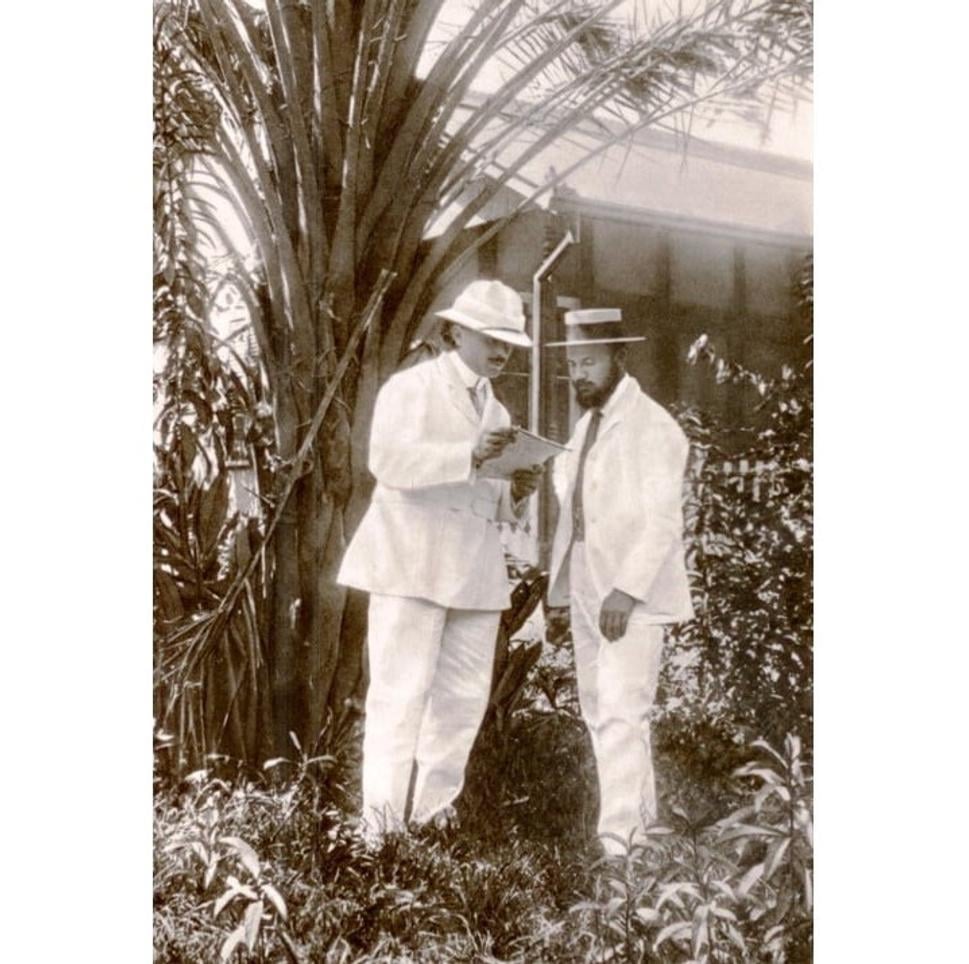
.
Štefánik found Gauguin's woodcuts, that were dumped
Milan Štefánik was a Slovak astronomer, who lived in Paris, in France, since 1904. In 1910, he was sent to Tahiti to fulfill a scientific mission. He knew that several years ago the French painter Paul Gauguin lived in Tahiti (he died in 1903) so Štefánik decided to visit the places where Gauguin stayed and painted. Shockingly, Štefánik managed to find several of Gauguin's unknown woodcuts – dirty and slightly damaged – near the house of a Tahitian woman. He took the woodcuts to Paris and showed them to his Czech friend, the painter and woodcutter Tavík František Šimon, who also lived in Paris. Šimon mentioned Štefánik's rare find in Tahiti in his memories:
Po bližším seznámení s ostrovany a navázaní přátelských styků podařilo se Štefánikovi v chatrči jedné domorodé ženy – snad bývalé to milenky nebo ženy Gauguinovy – nalézti v plotě dvorku zastrčená prkénka s řezbami Gauguinovými. Pátraje dále našel u ženy i dřevěnou bohatě vyřezávanou dosu, již „prý“ si Gauguin na tabák vyrobil. Jinde získal i velký relief řezaný do dřeva, a tak získal slušnou kolekci Gauguinových prací pro svoji soukromou sbírku.
.
Štefánik brought a woodcut of Gauguin's lover Pau'ura; they might have met
After Štefánik's unexpected death in 1919, his heritage ended in Prague, where experts made several prints of his woodcuts on paper. On one of the prints Gauguin’s Tahitian lover Pau'ura can be clearly identified, because it is a simplified picture of the famous Gauguin’s painting named Te Arii Vahine from 1896, and it is generally known that the model for the painting was Pau'ura. Gauguin and Pau'ura lived together from 1896 to 1901. That’s why it is possible that Štefánik acquired dumped Gauguin's woodcuts directly from Pau'ura.
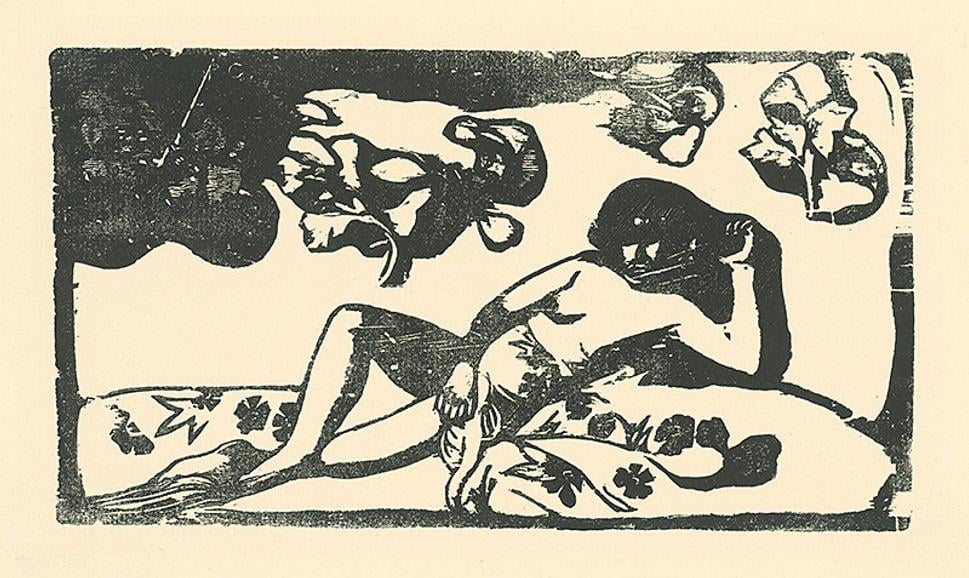
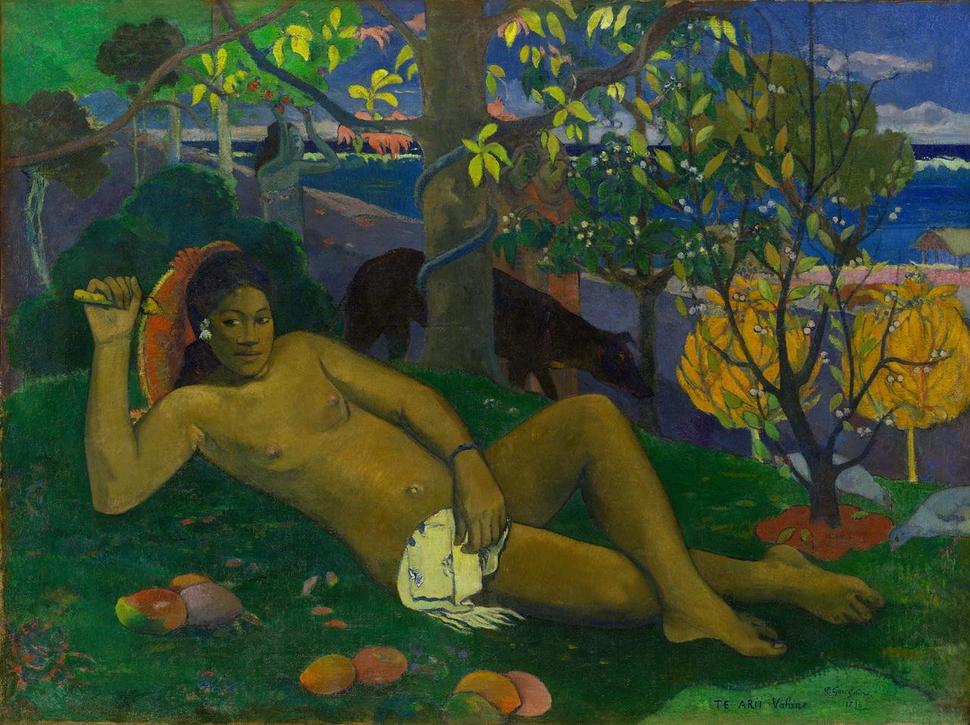
.
Gauguin's Pau'ura vs. Manet's Olympia
Gauguin's painting Te Arii Vahine is a sort of reaction to the painting Olympia by the French painter Edouard Manet from 1865. Olympia self-confidently offers her body as a commodity in the picture. She stoutly covers her private parts with her hand – until she gets money. Painted Pau'ura, whom Gauguin called in Tahitian "the queen" (Te Arii Vahine), has a similar pose as Olympia and is also naked. But Gauguin's painting expresses his idea of "unspoiled" Tahitian women and their love, lacking any calculation.
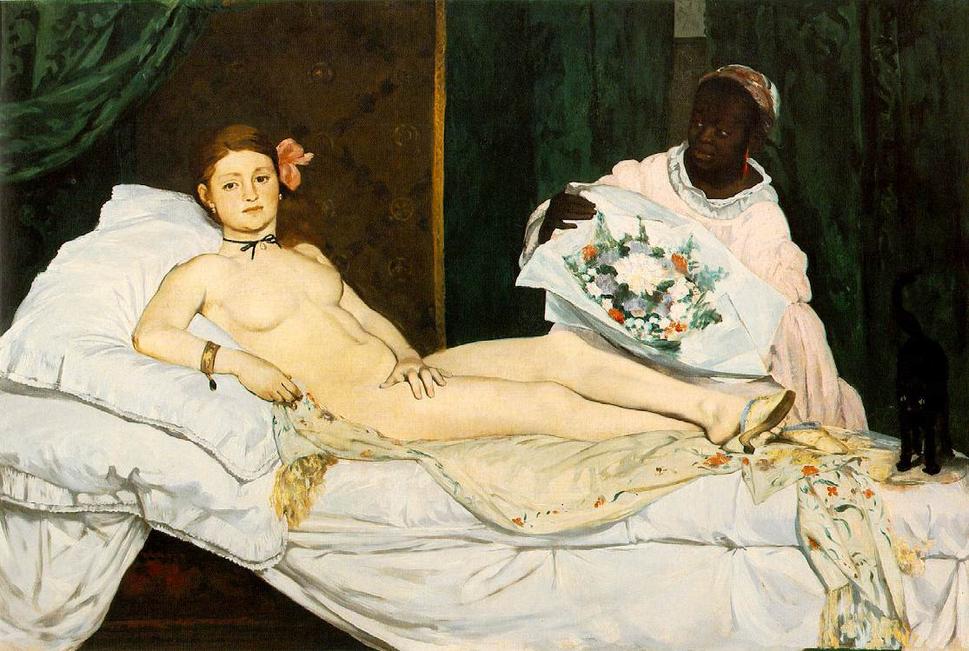
.
Gauguin's woodcut of a family - maybe of him, Pau'ura and their son Émile
In 1899, Pau'ura gave birth to Gauguin's son, whom the painter named Émile. Among pictures printed from Gauguin's woodcuts, there is an image of a man, a woman and a toddler. The picture was later named The Family. According to experts, Gauguin created the woodcut around 1900. That's why this artwork could be a picture of Gauguin himself, Pau'ura and their son Émile.
